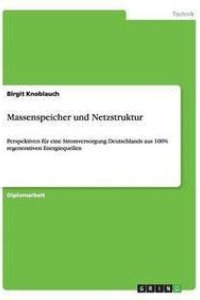
Liknande böcker
Substation Faults and Protection
Bok av John Tarilanyo Afa
Technical Report from the year 2011 in the subject Engineering - Power Engineering, grade: A, Atlantic International University (Niger Delta University), course: SFP 673, language: English, abstract: The purpose of this work is to establish the type of faults that may result when substations are sited in the region of the Niger Delta due to the prevailing climatic conditions. This will aimed at ensuring as far as possible a small probability of damage to substation insulations.For most transmission lines, relatively large numbers of yearly flashovers are permitted but such number of insulation damages is absolutely not allowed for substations. Flashover of insulation at substation means a short circuit on the busbar which even with the modern means of relay protection can cause most sever system damages. Substations unlike lines have very low probability of damage therefore a quantitative idea of the probability, the so called index of lightning resistance of a substation is used. It is equal to the calculated number of years during which a voltage dangerous for the substation installation does not occur. For modern high voltage substations, the index of lightning resistance is calculated as hundred or even as thousand years which is a proof of attempts made by designers to ensure the largest degree of lightning resistance of substation (Rao,2008,U.S Dept of Agri.2001,Martinez and Castro 2003).Substations must be protected from the direct lightning strokes and voltage waves travelling from the line as well as switching surges. In transmission lines the induced strokes (indirect strokes) due to lightning are important for 11kv lines only. For high voltage transmission lines (up to 220kv) the surges due direct lightning strokes determine the line insulations design. For extra high voltage (400kv and above) the severity of swiching surges is much more than that due to lightning (Gupta, 2008). Whether external or int
Visa pris inkl. frakt Inkl. frakt
Substation Faults and Protection
153 kr
Finns i lager
Substation Faults and Protection
209 kr
Finns i lager







